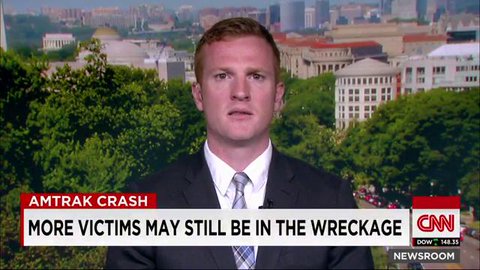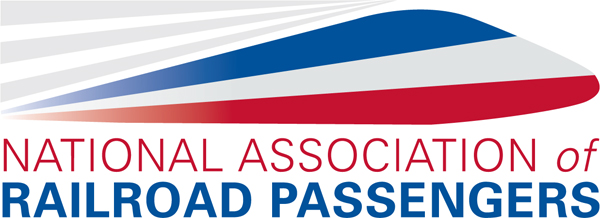Hotline #911
May 15, 2015

NARP team was front and center in the wake of the tragic Amtrak Train #188’s derailment in Philadelphia on May 12. President and CEO Jim Mathews appeared on NPR’s “The Diane Rehm Show”and CBS Baltimore, while VP Sean Jeans-Gail appeared on “CNN Newsroom.” Mathews and Jeans-Gail also did numerous interviews and provided infrastructure data to numerous media outlets.
The day after the accident, the House Committee on Appropriations voted down two pro-passenger amendments along party lines. The first would have provided $1.3 billion for capital investment grants and restored the budget for the Washington Metropolitan Area Transit Authority when it had been cut by 50 percent. The second focused solely on providing an additional $1.3 billion for Amtrak. Instead, the Committee approved $1.14 billion for Amtrak for Fiscal Year 2016 -- a $262 million cut from $1.39 billion enacted in FY 2015.
NARP called on the Senate to step in and protect America's passengers from these ill-considered, irresponsible cuts in a press statement issued May 13. The cuts are all the more indefensible coming only a day after a deadly Amtrak accident on the Northeast Corridor that claimed the lives of seven passengers. [Read NARP’s statement on the accident.]
"It is true that we don’t know the specific cause that triggered yesterday’s tragedy,” said Mathews. “But several things are certain: Amtrak’s Northeast corridor—the busiest rail corridor in the Western Hemisphere—faces a $52 billion maintenance backlog that is hindering the efficient movement of trains, the average age of Amtrak’s equipment is 28 years old and its fleet is rapidly aging beyond its usable lifespan.”
Transportation providers all across the U.S. are struggling to find enough funds to implement Positive Train Control and sufficiently protect grade crossings, said Mathews. “These are two safety investments that could have prevented two deadly train accidents in the Northeast within the past 12 months,” he said. “We don’t need to wait to hear from the NTSB to know that we are failing to invest at sufficient levels. This House Appropriations bill is a disservice to America’s passengers.”
NARP also issued a statement in the aftermath of the accident here. For complete coverage and more information, please see our special page on Train #188 here.
Congress began weighing in soon after the accident, with Rep. Peter DeFazio (D-Ore.) calling it “very, very ironic” that appropriators cut $290 million from Amtrak capital grants program day after derailment in Philadelphia, reports Bloomberg. DeFazio is the ranking member on the House Transportation and Infrastructure Committee. And Committee Chairman Mario Diaz-Balart (R-Fla.) told reporters that “there will obviously be a thorough investigation and hopefully whatever that investigation finds, there will be something we can act on,” reports Bloomberg. But he declined to comment when asked if planned cuts to Amtrak funding in the FY 2016 bill being marked up are a mistake in light of the derailment in Philadelphia.
"It's a battle that has been waged for years," said former New York Senator Al D'Amato, a Republican, about the funding of Amtrak in an interview with Bloomberg Politics. "Many of the Republican areas, the South, the West, they have little if any need [for passenger rail service], so consequently they are more reluctant to vote for funding." President Richard Nixon supported it in 1970 as a means to maintain rail service in the age of dying private railroads. In recent years, though, Amtrak has increasingly become a target of Republican budget hawks. On the state level, Republican leaders, including New Jersey Governor Chris Christie and Wisconsin Governor Scott Walker, have actively opposed recent rail improvements for their states as a waste of taxpayer dollars.
“Every day, millions of Americans rely on a remarkable network of roads, bridges, subways, trains and buses to connect us to work, school and opportunity. But our transportation system, once the envy of the world, is in jeopardy, according to an op-ed in the New York Times. The piece was written by New York City Mayor Bill De Blasio, a Democrat and Oklahoma City Mayor Mick Cornett, a Republican. The pair are calling on Congress to increase infrastructure spending.
“Last week, I took Amtrak’s Northeast Regional service from Washington, D.C., to New York. It’s a lot cheaper than the Acela Express, and when it’s on schedule it does the trip in under three and a half hours,” wrote John Cassidy in the New Yorker. “Unfortunately, it runs late about 30 percent of the time, and this was one of those occasions.” As his train slowed to a crawl somewhere in Delaware, he was reading an article on a new superhighway carved through the mountains in China’s Sichuan province. “I was tempted to compose a tweet about contrasting approaches to investing in transportation infrastructure, but I didn’t bother,” he wrote. “At this stage, it has become something of a cliché to compare Amtrak to Japanese bullet trains and the Eurostar, or J.F.K. to airports in Hong Kong and Singapore.”
A story in the Global Post reflects on how train travel in the United States is “the neglected cousin,” burdened with aging equipment and insufficient funding that were thrust into the spotlight after the derailment of Amtrak Train #188 near Philadelphia on May 12. "The United States seems to always stop short of making the investments needed in rail to create a world-class train system," said Joseph Schwieterman, a professor at DePaul University in Chicago.
Caltrain says it will have positive train control in place on all its trains by the December deadline mandated by Congress in 2008, reports NBC Bay Area. In San Carlos, Caltrain workers are connecting fiber optic lines along the entire length of the transit service's right of way. The fiber optic lines will link with radio transmitters, officials said.
"There will be service cuts" in the frequency of trains on some routes if Illinois’ Amtrak subsidy is reduced by $16 million, Amtrak board member Thomas Carper told an Illinois House transportation committee. The Belleville News-Democrat noted that Gov. Bruce Rauner (R), dealing with a $6.2 billion gap in the state budget, has proposed a $16 million cut in the annual subsidy the state pays to Amtrak. “I don’t know which routes would be cut,” Carper said.
Construction on a $1.5 billion renovation of the rail line between Chicago and St. Louis is near completion, reports KSDK-TV. The project will allow trains to travel at speeds of up to 110 mph. Rick Harnish, executive director of the Midwest High Speed Train Association, says new safety measures are also being installed as part of the renovation.
Fares on the bullet train being built from Los Angeles to San Francisco would cost around $86,reports the Los Angeles Times. The original price was $50 seven years ago when the project was approved by voters. Since then, the California High-Speed Rail Authority has projected the fare would be $83 and $105. The current estimate would be one of the world's cheapest high-speed rail trips on a per-mile basis, assuming that it reflects a typical fare between downtown stations in Los Angeles and San Francisco, a Times analysis found.
The Raleigh News-Observer reports that U.S. Transportation Secretary Anthony Foxx is more optimistic that high-speed rail will eventually become a reality in the Southeast after Georgia and South Carolina expressed interest in a joint agreement between North Carolina and Virginia to study, coordinate and advocate for the project. "You look across the country, the Northeast corridor is more than a constellation of states," Foxx told the Associated Press. "That multistate coordination just hasn't existed as strongly here in the Southeast. And that would be a really key part of starting something big." North Carolina and Virginia established a compact to promote high-speed rail years ago, and officials in Georgia and South Carolina are now discussing whether they should join.
An effort to bring train service between Ann Arbor to Traverse is being spearheaded by the Michigan Land Use Institute, reports Crain’s Business Detroit. The nonprofit raised $18,700 in a crowdfunding campaign in March as part of a 10-year vision to provide a new and more environmentally friendly option to travel the state and boost the downtown economies of communities along the route. "There's a lot of work to be done and questions to be answered, and our goal is just to keep moving this forward to get the questions answered," said Jim Bruckbauer, a policy specialist at the institute.
Millennials’ adroitness at using technology, their predisposition for living in urban neighborhoods and taking a train or bus to get around is already influencing trends in the transportation field, according to a report by the American Public Transportation Association, "Millennials & Mobility: Understanding the Millennial Mindset." The study examined what is driving the millennial generation’s transportation choices, what will drive those choices in the future and the opportunities for the transit industry to capitalize on those choices, reports Progressive Railroading. The reasons behind millennials' transportation decisions are pragmatic: They ride trains and buses primarily for convenience and to save money. At the same time, they have high expectations for the transit services they use: 61 percent want to see more reliable systems; 55 percent expect real-time updates and wireless Internet service wherever they go; and 44 percent want a more user-friendly travel experience over the next decade.
“For all the fussing about transit and the need for more kinds of it in the Triangle, the shovel-turning to launch the Union Station project in downtown Raleigh should bring everyone together,” says an editorial in the Raleigh News-Observer. “This is a major breakthrough. The station will serve Amtrak riders and replace the dull and tattered Cabarrus Street station, which was an embarrassment as a train station for the state’s Capital City. The new station, a renovation of the old Dillon Supply Viaduct building, is more like it.”
